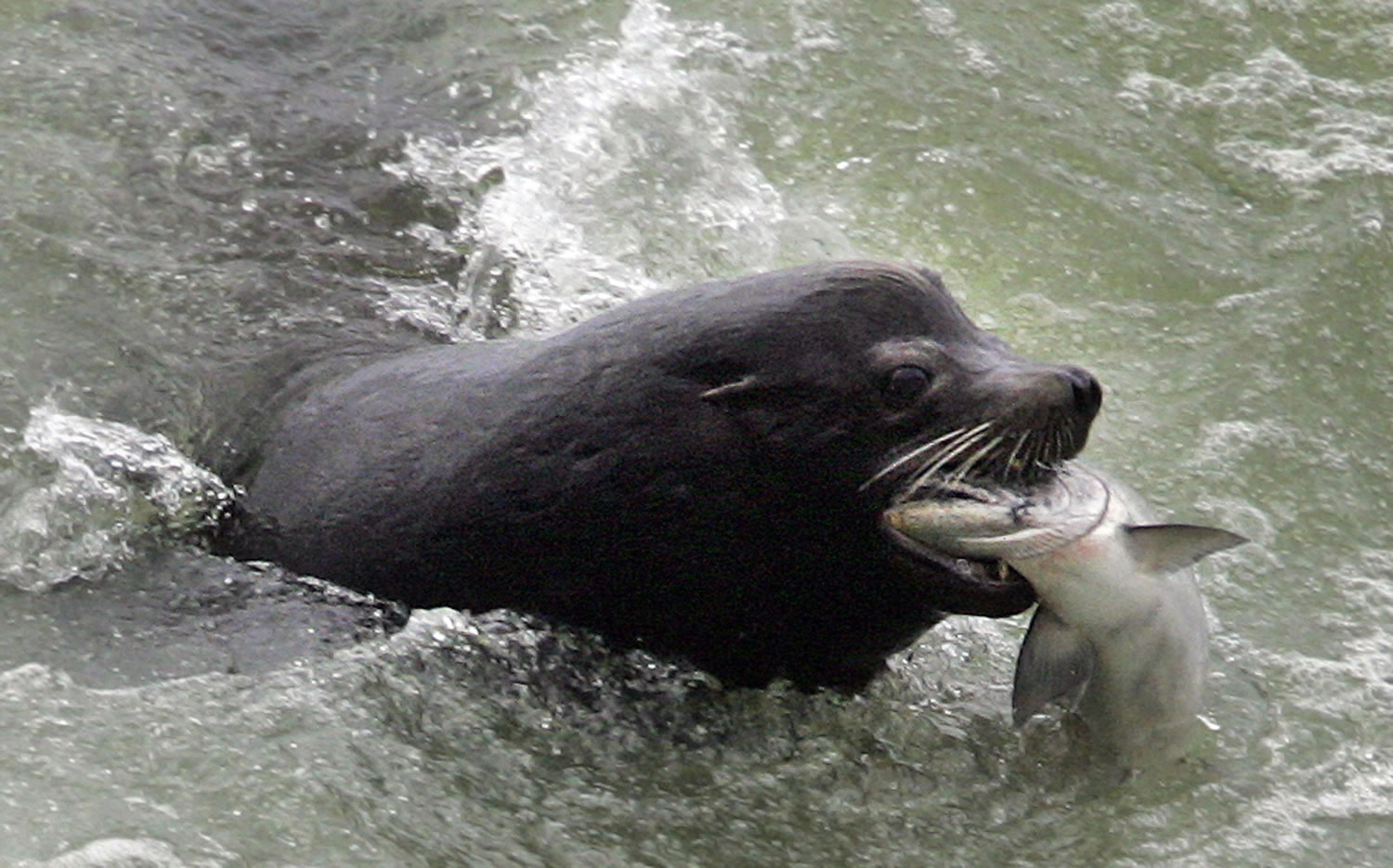GRANTS PASS, Ore. — A conservation group known for interfering with whaling ships wants to stop Oregon’s killing of sea lions that eat endangered salmon in the Columbia River. The group Sea Shepherd was in Astoria on Sunday photographing and video-taping Oregon Department of Fish and Wildlife technicians as they captured and branded 38 sea lions at the East Mooring Basin.
The photos showed flames and smoke coming from hides of sea lions being branded.
“We believe these animals are being scapegoated,” said Ashley Lenton, leader of Sea Shepherd’s Dam Guardian Campaign. “The scientific fact is they take less than 4 percent of the salmon runs.”
Lenton said habitat loss, hydroelectric dams, hatchery fish and harvest are responsible for the bulk of wild salmon declines.
Lenton said a trap used to capture the sea lions nearly sank with the weight of some 30 animals and a wildlife technician, putting the animals in danger of drowning. Sea lions sometimes go into seizures after being captured, forced into a branding chute, and branded, she said.



